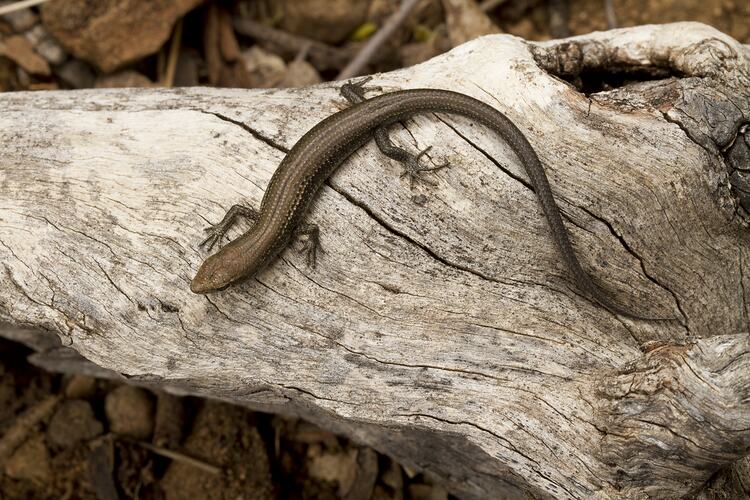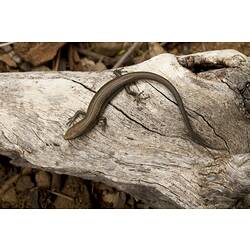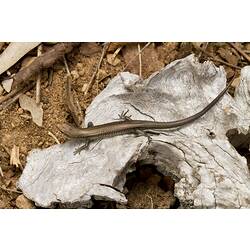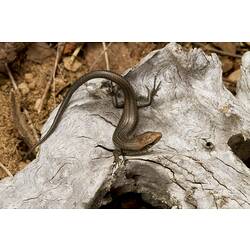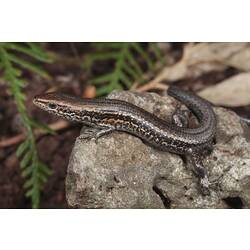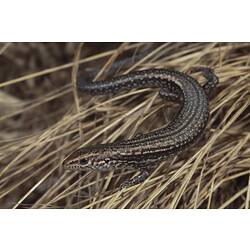General Description
Small grey-brown skink with variable patterning, usually with a dark brown stripe on the back from neck to hips. Sides blackish usually with a few faint light speckles and boarderd above and below by poorly-defined whitish stripes. The under surface is light grey. Juveniles may have stronger patterns. In the autumn breeding males may have a red stripe on the side and a red flush near the forelimbs. Lower eyelid has a large clear window, allowing the eye to be seen when the eyelids are closed.Snout to base of tail length up to 7 cm, and the tail itself is longer, up to approximately 10 cm.
Biology
A surface-active skink found in leaf litter, tussock grass or by fallen timber. It is a very cold-tolerant species that basks in cool, sunny conditions. Females bear live young, usually two to five, in late summer. This species is notable for having one of the most complex reptile placentas known; its developing young are given extensive nourishment direct from the mother's circulation rather than relying just on a yolk sac. The skinks mate in autumn, but females store sperm until they ovulate in spring.
Distribution
Southern highlands of New South Wales Victoria and south-eastern South Australia.
Habitat
Found around fallen timber or foraging in leaf litter in a variety of forest and grassland habitats.
More Information
-
Animal Type
-
Animal SubType
-
Brief Id
Small, agile brownish skink with a narrow brown stripe along the back and white stripes on the sides
-
Colours
Brown, Grey, Black, White
-
Maximum Size
17 cm
-
Habitats
-
Diet
Invertebrates
-
Diet Categories
Insects, Invertebrates
-
Endemicity
-
Commercial
No
-
Conservation Statuses
CITES: Not listed, FFG Threatened List: Not listed, EPBC Act 1999: Not listed, IUCN Red List: Least Concern
-
Taxon Name
-
Scientific Author
(Duméril & Bibron, 1839)
-
Common Name
Tussock Cool-skink
-
Other Names
Southern Grass Skink
-
Kingdom
-
Phylum
-
Subphylum
-
Class
-
Subclass
-
Order
-
Suborder
-
Infraorder
-
Family
-
Genus
-
Species Name
entrecasteauxii
